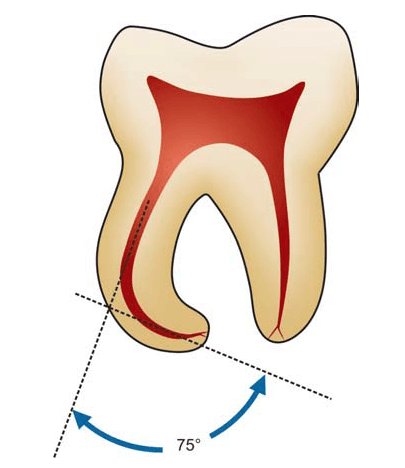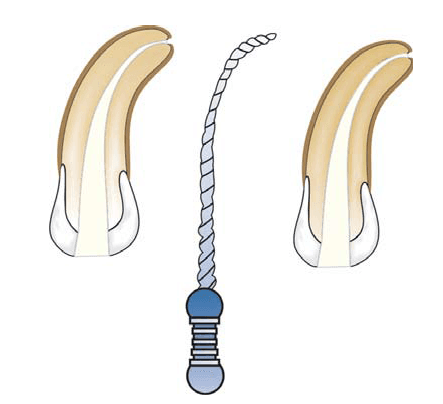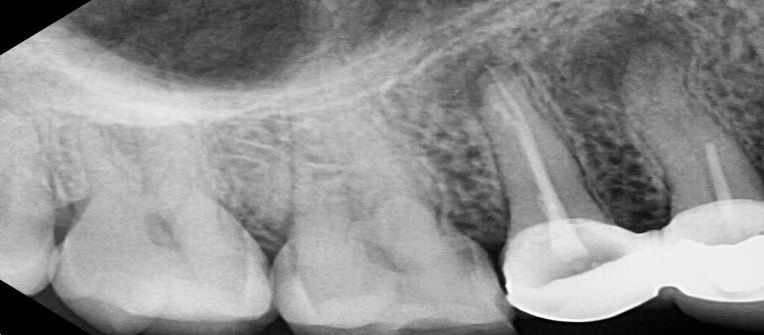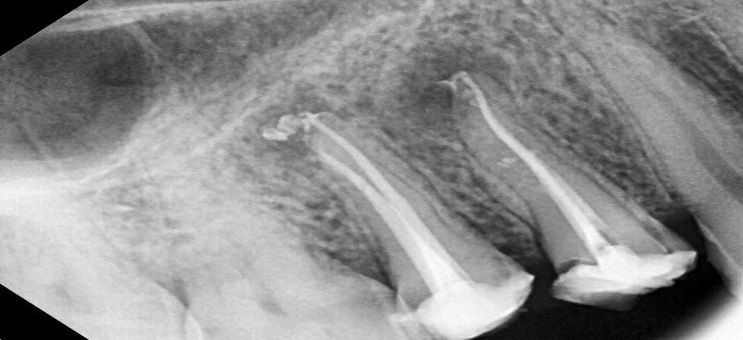User Manual to RCT
Tips to manage curved canals
-
Estimate the angle of curvature.
-
Decreasing the force by means of which straight files apt to bend against the curved dentine surface.
-
Precurving the file:
- Placing a gradual curve for the entire length of the file.
- Placing a sharp curve of nearly 45 degrees near the apical end of the instrument.


- Use smaller no. files: Since smaller sized instruments can follow the canal curvature because of
their flexibility, they should be used until the larger files are able to negotiate the canal
without force.
- Use of intermediate sizes of files: medium file: prepared by cutting 1 mm of the tip of the
instrument creates a new instrument size, for example cutting 1 mm of a number 15 file makes it
number 17 file. In severely curved canals the clinician can cut 0.0 5 mm of the file to increase
the instrument diameter by 0.01 mm. This allows the smoother transition of the instrument sizes
to cause smoother cutting in curved canals.
- Modifying cutting edges of the instrument: The cutting edges of the curved instrument can be
modified by dulling the flute of outer portion of the apical third and inner portion of the
middle third. Dulling of the flutes can be done with the help of diamond file.
-
Use of Blue Flex flexible files: These files cause less alteration of the canal shape than the
stiffer files. Flexible files help in maintaining the shape of the curve and avoid occurrence
of procedural error.
- Follow the balanced force technique:
- Clockwise 60°, so that it binds against the wall and advances apically.
- – Anticlockwise 120° with apical pressure, so as to crush and break off the engaged
dentinal wall.
- – Clockwise 60° without apical advancement, allows flutes to be loaded with debris and
removed from the canal.
- Blue Flex Coronal flaring: to reduce the coronal binding of instruments.


- Recapitulation with smaller instruments continuously.



